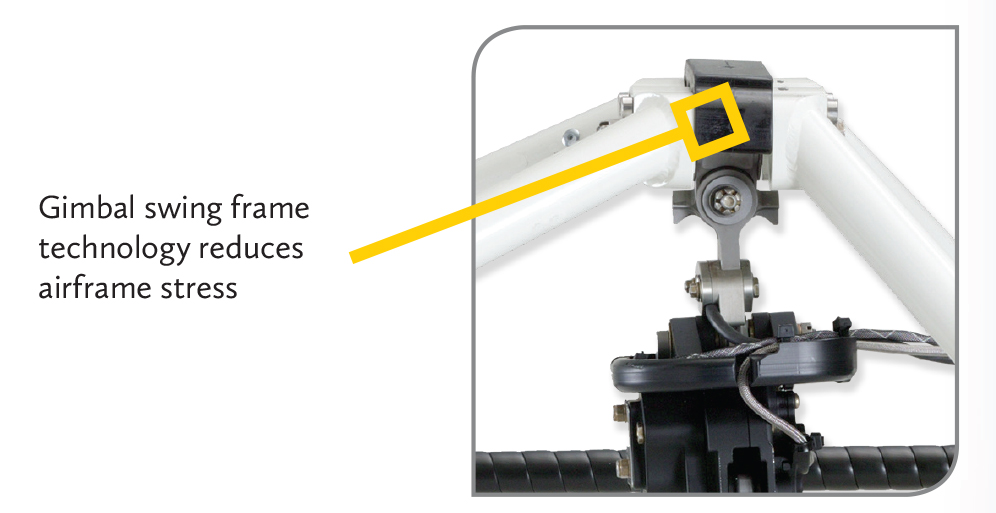Gimbal Swing Frame Technology
 Unlike rigid swing frames, Onboard's gimbal frame design evenly distributes weight between the four cables to ensure balanced load sharing throughout the aircraft.
Unlike rigid swing frames, Onboard's gimbal frame design evenly distributes weight between the four cables to ensure balanced load sharing throughout the aircraft.
With a rigid frame (such as supplied by original equipment manufacturers), one or more of the cables goes slack when swinging side to side with no load. However, when a load is on the hook, the cables can't slacken and the geometry is accommodated by flexure of the swing frame and the airframe. The more rigid the swing frame is, the more the load weight is transferred to the airframe.
Our swing frames include a gimbal connecting piece near where the hook attaches and the spherical rods end on the sides. As the swing moves from side to side under the helicopter, the four cables all describe their own arcs. This can be observed by moving the Onboard Systems gimbaled swing frame side to side under the helicopter and watching the gimbaled joint and the parallelism of the frame tubes. The frame flexes to accommodate the paths of the cable ends, reducing the stresses to both the airframe and the swing frame.
Featured Products
C-40 Screen Gallery
Preview the customizable screens and the functionality they provide.
TALON 2K Remote Cargo Hook Kit
Designed specifically for use with lighter helicopters, our 2K Remote Hook Kit safely transports loads up to 2,000 lb. (907 kg.).
Blackhawk Replacement Hook Kit
Find out more about our FAA Certified replacement cargo hook kit for the Sikorsky UH-60 Blackhawk.


